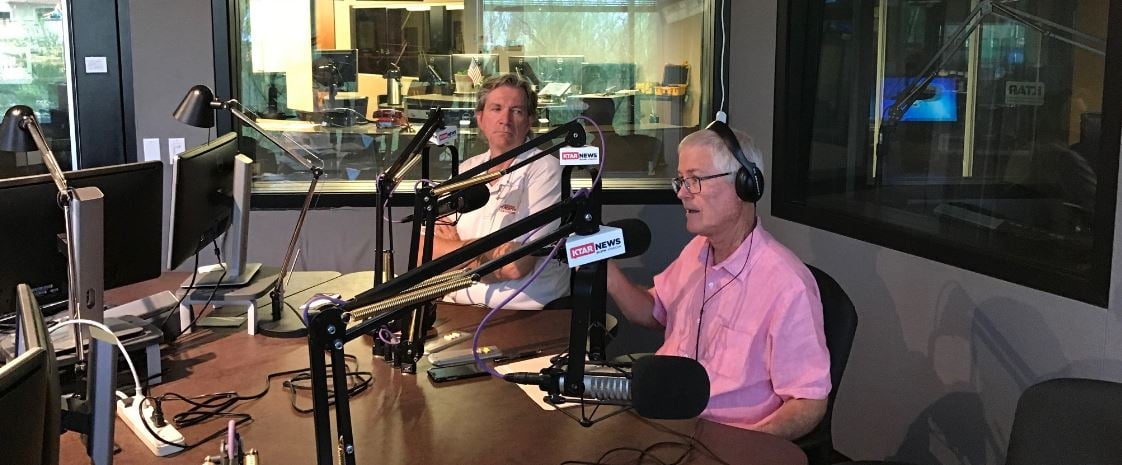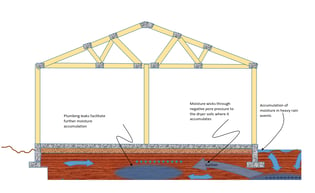Recently, I sat down with David Deathrage, PE of Copper State Engineering. We discussed a variety of topics, including how Mr. Deathrage founded his firm and the need for engineering on structural repairs.
![]() Bob Brown: How did you come to start your own firm? How long ago, etc.
Bob Brown: How did you come to start your own firm? How long ago, etc.
David Deathrage: 1996 I was tired of asking for raises after working hard for 16 years. Was bringing in lot of new work. Saw opportunity and ran with it.
What are the most common mistakes you have seen foundation repair contractors make? a) Poor recordkeeping on repairs including documentation of floor levels after mitigation. b) Using piers on expansive soil problems. c) Inadequate geotechnical characterization of soil conditions.
BB: What does your firm specialize in?
DD: Civil engineering including geotechnical, environmental and hydrology. Lots of forensic work including legal expert witness services for geotechnical and hydrology cases.
BB: On the Forensic side, what was your most interesting challenge?
DD: As a forensic expert CSE was tasked with proving that paved street and sidewalk distress in a Marana, Arizona development was due to expansive soils and not utility settlement. We were up against a much larger forensic firm and were successful in proving our opinions.
BB: We discovered an old 1930’s truck buried below a building once. What was one or two of the most unusual things you have come across?
DD: Prehistoric layers (several feet thick) of large oyster shells in Texas under the new Trump wall.
We drilled into a concrete drainage culvert 12 feet wide and 10 feet high that no government entity would claim ownership in Glendale AZ.
BB: It seems there is a lot of myths and misinformation about foundations and soils. What are some that you commonly see?
DD:
Myth no. 1: Contractors know how to compact soil.
Myth no. 2: Post-tension slabs will automatically mitigate soil problems such as compressible soils and expansive soils without the use of appropriate geotechnical design criteria.
Myth no. 3: Developers follow geotechnical report recommendations.
Myth no. 4: Contractors read plans.
BB: There is one local contractor who claims that by drilling under a slab at the cracked high point, and if soil is not packed right up under the slab, that it can be interpreted as proof of no heave from expansive soils… what can you say about that?
DD: Silly reasoning. If the slab is fixed at one end and there is soil heaving in the middle of the slab, the slab can cantilever upward at the unfixed end, causing a void. This is relatively common.
BB: We recently become involved in a school that showed edge heave patterns with the walls leaning away from the top trusses…. And no expansive soils……… what is the most head scratching enigma that you have run across?
DD: First, if there is settlement under the outside of the wall footing and the footing rotates such that the wall tilts outward and the interior portion of the footing rises as the outside drops, there can be an apparent heave pattern under the adjacent floor slab with the wall tilting outward???
For my most head scratching enigma, there was a relatively new four story hotel constructed in Flagstaff. The hotel was more than 200 feet long and settled in the center more than 6 inches based on a manometer survey two years after completion of construction. All the rooms doors, windows, walls and ceilings were perfectly level and exhibited no movement related damage or distress. Big lawsuit alleging excessive ongoing settlements. After scratching head went to work reviewing timing of hotel construction and reviewed geotechnical site conditions. Area of native soil under original natural wash portion of the site was 20 feet of saturated plastic clay. About 20 feet of import fill was placed over the wet clays to level the site over the original wash. Native wet clays slowly consolidated under the weight of the fill while the hotel was being constructed. Consolidation settlement was over by the time the shell of the building was complete, but before any of the rooms or outside walls were completed. No one noticed the 6 inches of settlement that was relatively uniform in the middle of the building and all the rooms were constructed individually level. Because there was no additional soil movement under the hotel, there was no distress in any of the rooms and no mitigation was necessary.
BB: What are the most common mistakes you have seen foundation repair contractors make?
DD: Poor recordkeeping on repairs including documentation of floor levels after mitigation.
Using piers on expansive soil problems.
Inadequate geotechnical characterization of soil conditions.
BB: What was the biggest learning opportunity you have experienced in your career?
DD:
Take your pick:
Golden Sunlight Slurry Wall Mitigation (Montana)
Southwest Forest Dam Failure (Arizona)
Quail Creek (Utah) Dam Failure
United Nuclear (New Mexico) Dam Failure
J16-A Black Mesa (Arizona) Dam Mitigation
Bob Brown & David Deathrage talking Foundation Repair with Romey Romero of Rosie on the House. Click the photo to listen to the full interview!








